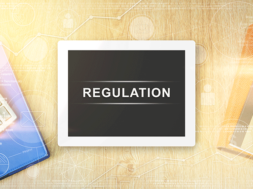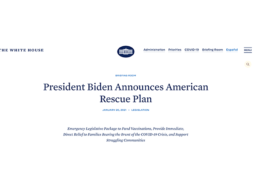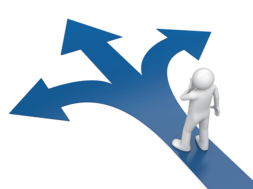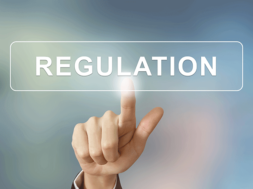
Navigating Relationship Risks: An Overview of Policy Approaches to Governing Consensual Employee-Student Relationships in the University
By Hayley Hanson, Katie Jo Luningham, Husch Blackwell LLP
I. Introduction
In the past, searches for information about employee-student romantic relationships brought up salacious news headlines like “Relationship Problems”1 and “Student-Faculty Dating: It’s Not in the Rule Book.”2 Today’s Google search of “employee student relationships” brings up a different set of titles: university policies.3 The same result occurs when you add in the words “amorous”4 or “consensual”5 to the search.
In the past, colleges and universities have been hesitant to enact policies policing romantic and/or sexual relationships, but now many schools are taking action to implement employee-student relationship policies.6
Given the recent increase in administrative and regulatory guidance on the topic of sexual misconduct; increased enforcement from the Department of Education’s Office of Civil Rights; and the media coverage that can accompany these relationships, this trend is certainly not surprising. At present, a majority of schools appear to favor policies that govern relationships among students, faculty, and employees and provide set clear expectations – and corresponding consequences for policy violations.7
II. Possible policy approaches
Research indicates that institutions have taken one of four possible policy approaches to the issue of employee-student amorous relationships.8
A. No policy. Though the trend is toward implementing employee-student relationship policies, many schools do not have them.9 Some of those institutions affirmatively acknowledge their choice not to have such policies. For example, the University of Arizona has intentionally adopted a policy framed at managing conflicts of interest, rather than romantic or sexual relationships specifically,10 while Northeastern State University’s has adopted the following language: “While the University does not intend to regulate the social interactions or relationships of its employees, any behavior that constitutes harassment will not be tolerated…”.11
Schools may elect not to have policies for a variety of reasons, including a desire to avoid policing personal relationships, labor or constitutional issues, and even concerns about their ability to enforce such policies.
Notably, practitioners view this approach as “likely best employed by smaller institutions where employee-student activity is more visible in the community.”12
B. Discouragement policy. Among institutions who have adopted a policy that directly addresses employee-student consensual relationships, some schools choose to strongly discourage those relationships, rather than expressly prohibit employee-student amorous relationships. One illustration is Colorado State University, which has a policy that “the university does not wish to interfere with private choices regarding personal relationships…[but] relationships in which power differentials are inherent (faculty-student, staff-student, administrator-student) are generally discouraged.”13
Overall, the language of those policies is intended to both convey the university’s unwillingness to regulate personal relationships while also communicating strong institutional disapproval.
C. Partial ban policy. Some schools have instead chosen to prohibit only certain types of relationships, instead of prohibiting employee-student relationships altogether. Generally, these partial ban policies draw a distinction between different categories of employee-student relationships. These policies contain clarifying language, meant to illuminate the line between acceptable and prohibited relationships. In the case of Boston College’s policy, “employees, whether faculty or staff, shall not engage in consensual relations with students whenever the employee has a ’position of authority’ with respect to the student…,” but are free to do so absent any “authority” issues.14 In practice, a relationship between a senior undergraduate Philosophy major and an assistant basketball coach would be allowed, but a relationship between that same undergraduate student and the graduate student teaching assistant (employee) for Philosophy 101, a class she is currently enrolled in, would be a violation of the school’s policy.
In keeping with a more nuanced policy view, some schools that have partial ban policies permit broader discretion when dealing with relationships that involve graduate students.15 For instance, Stanford University16 and the University of Notre Dame have policies that specify romantic and/or sexual relationships are prohibited between an employee and “any student currently enrolled as an undergraduate.”17
D. Full ban policy.
A number of colleges and universities have enacted bright-line policies that ban all romantic relationships between any employee and any student.
For example, Willamette University’s policy states that “The University prohibits the establishment of consensual romantic or sexual relationships between any…employee (faculty, administration or staff) and any…University student.” Such policies leave no doubt about who is prohibited from engaging in consensual relationships.
Perhaps the greatest benefits of these policies is that they are easier to implement and easier for employees and students to understand than those requiring greater consideration of the circumstances of the relationships at issue – so long as one party is an employee and one is a student, any romantic relationship is a violation.
As identified above, each policy approach indicates a different ideology about how best to approach consensual relationships in higher education. Although these policies are more popular today than in the past, universities and colleges still struggle to find the policy that best fits their institution and campus community.18
III. Considerations for policy implementation
When considering whether to adopt a policy governing employee-student romantic relationships, institutions of higher education need to contemplate a variety of issues. At a minimum, institutions should carefully consider the following issues when crafting a policy to govern consensual employee-student relationships:
- What level of governance does the institution want to have over these relationships?
- Are those relationships not regulated at all, discouraged, prohibited, or some combination?
- Which students and employees are covered?
- What categories of relationships are covered?
- What are the reporting procedures, if any?
- What are the consequences for violation?19
IV. Best practice: a notification policy
Regardless of whether an institution chooses to utilize one of the policy approaches outlined above, colleges and universities should contemplate adopting notification requirements as a means of monitoring employee-student relationships for potential issues. Several institutions have separate procedures for notifying the institution about employee-student relationships.20 These policies serve to address conflicts of interest, and can set in motion a chain of institutional procedures developed to prevent such conflicts.21 Such policies put members of the campus community on notice that relationships must be disclosed.
Even schools that lack a specific employee-student relationship policy have addressed notification requirements.
Notably, the University of Arizona’s policy highlights its “intent…to direct employees to disclose relationships that have created or may create conflicts of interest and to give the University an opportunity to manage and reconcile any such conflicts, if possible,” and advises its employees that those “who violate this policy may be subject to disciplinary action.”22 This language both informs the university community about the institution’s approach to handling employee-student relationships and also notifies members of the campus community that disciplinary action may be utilized when the policy is violated. Ultimately, adopting a notification or disclosure policy can help institutions avoid conflicts of interest, manage potential conflict situations, “protect people from the kind of injury that either a subordinate or superior party to such a relationship can suffer, and provide information and guidance to members of the [campus] community.”23
V. The aftermath: policy violations
It is important to consider the dynamic that employee-student relationships create within the campus community. Realistically, third parties may be the most problematic complainants – especially those who feel that they have been disadvantaged by an employee-student relationship.24 In fact, none of the aforementioned policy choices will prevent grumbling by members of the campus community about a suspected employee-student relationship. Accordingly, universities should be prepared to address informal or formal grievances and complaints, regardless of whether or not an institutional policy is in place. Even in cases where no policy prevents employee-student relationships, valid concerns about preferential treatment or bias should be addressed. Likewise, when a campus policy may have been violated, institutions should be prepared to enforce those policies and address these concerns.
As a threshold matter, colleges and universities must understand that, if they choose to put an amorous relationship policy in place, the institution must enforce that policy. In this respect, the choice to refrain from putting a policy in place or to implement a discouragement policy frees an institution from taking action if the college or university learns of an employee-student relationship that does not violate other university policies.25 If, however, an institution implements a full or partial ban policy, the institution must enforce that policy when a violation occurs.
In considering which amorous relationship policy best fits their campus, college and university officials should take time to consider how the institution will address policy violations when they arise. Realistically, the question is not “if” a violation will occur, but rather “when” – because employee-student relationships are “bound to happen,” regardless of institutional policies.26 Setting aside the differences in implementation between a full or partial ban, both require institutions to police the policy and deal with violators. Depending on how an institution structures the policy, violators will be held accountable for violating the policy to various degrees. The punishment for violating the amorous relationship policy ranges from issuing a warning, to letters of reprimand to dismissal.27 Although full dismissal of an employee would be utilized only in the most egregious cases, simply removing or relocating the employee from any supervisory role or role of responsibility over the student may be sufficient to address many circumstances.
VI. Conclusion
Employee-student relationships may pose significant risks that can best be addressed through an institutional policy.
When making these decisions, institutions should thoughtfully and intentionally consider the culture of their campus to determine which policy option may best suit the needs of their educational culture.
In doing so, institutions must also decide the level of regulation; parties to be regulated; additional procedures; and discipline that should accompany an employee-student relationship policy. At a minimum, institutions should consider the advantages of enacting a notification or disclosure policy.
Resources
1 Kiley, Kevin, Relationship Problems, Inside Higher Ed, August 30, 2011, available at https://www.insidehighered.com/news/2011/08/30/idaho_student_s_death_and_ties_to_former_professor_highlights_difficulty_of_preventing_faculty_student_relationships.
2 Lombardi, Kate Stone, Student-Faculty Dating: It’s Not in the Rule Book, New York Times, May 9, 1993, available at http://www.nytimes.com/1993/05/09/nyregion/student-faculty-dating-it-s-not-in-the-rule-book.html?pagewanted=all.
3 On February 1, 2016, Google’s top results were policies for the University of North Carolina, the University of Michigan, and Northwestern University. See, e.g., University of North Carolina at Chapel Hill, Improper Relationships Between Students and Employees (March 15, 1996), available at http://hr.unc.edu/policies-procedures-systems/spa-employee-policies/employee-relations/improper-relationships-between-students-and-employees/ (“On March 15, 1996, The University of North Carolina Board of Governors adopted a system-wide Policy that prohibits amorous or sexual relationships between faculty or staff employees and (1) students they evaluate or supervise by virtue of their teaching, research, administrative, or other employment responsibility and (2) students who are minors below the age of eighteen.”); University of Michigan, Standard Practice Guide Policies: Employee-Student Relationships (May 23, 2005) available at http://spg.umich.edu/policy/601.22-1; Northwestern University, Division of Student Affairs Employee-Student Relationship Policy, available at http://www.northwestern.edu/studentaffairs/media/pdfs/policy-sa-employee-staff.pdf.
4 See, e.g., California State University Long Beach, Consensual, Amorous, and/or Sexual Relationships Between Employees and Students, available at http://web.csulb.edu/divisions/aa/catalog/current/general_policies/consensual.html; Purdue University, Amorous Relationships (III.A.1) (June 1, 2015), available at http://www.purdue.edu/policies/ethics/iiia1.html; University of Colorado Boulder, Consensual or Amorous Relationships, available at http://www.colorado.edu/studentaffairs/consensual-or-amorous-relationships.
5 See, e.g., VCU School of Medicine, VCU Policy on Employee-Student Consensual Relationships (Nov. 16, 2006), available at http://www.medschool.vcu.edu/media/vcu-medicine/content-assets/images/professional/vcu_consensual_relationships_policy.pdf; University of Texas at Austin, Handbook of Operating Procedures: Consensual Relationships (Nov. 1, 2001), available at https://www.policies.utexas.edu/policies/consensual-relationships; Colorado State University, Consensual Relationships (2016), available at http://oeo.colostate.edu/consensual-relationships-policy.
6 See Sherry Young, Getting to Yes: The Case Against Banning Consensual Relationships in Higher Education, 4 Journal of Gender & the Law 269, 272 (1996) (“Consensual relationship policies are a relatively recent development in higher education. The first consensual relationship policies were adopted in the mid-1980s. By the mid-1990s, the popular press was reporting that a growing number of institutions were considering similar policies…”).
7 See Anne Cartwright, State of Affairs: Employee-Student Amorous Relationship Policy & Procedure Considerations, NACUANOTES (Feb. 2016).
8 For the purposes of this article, the term “employee” encompasses anyone working for the institution. Although some institutions have faculty-specific policies, many schools also broaden the application of their policies to employees.
9 See e.g., Young, supra note 6 (“Most institutions do not have any formal restrictions on consensual relationships.”).
10 The University of Arizona, Management of Personal Conflicts of Interest for the University of Arizona (Dec. 6, 2007), available at http://policy.arizona.edu/ethics-and-conduct/management-personal-conflicts-interest-university-arizona (“The University establishes this personnel policy to address conflicts of interest arising from interpersonal relationships not otherwise covered by existing policies or law… Romantic or sexual relationships between employees and students when the employees do not have a direct instructional, supervisory, or evaluative responsibility with respect to the student are not per se prohibited. They may, however, result in a conflict of interest…”).
11 Northeastern State University, Employment Handbook: Workplace and Employee Relations, “Consensual Sexual Relationships,” available at http://offices.nsuok.edu/humanresources/Resources/Handbooks/EmploymentHandbook/WorkplaceandEmployeeRelations.aspx.
12 See Cartwright, supra note 1.
13 Colorado State University, Consensual Relationships (2016), available at http://oeo.colostate.edu/consensual-relationships-policy.
14 Virginia Commonwealth University, Employee-Student Consensual Relationship-Interim (April 13, 2015), available at http://policy.vcu.edu/sites/default/files/Employee-Student%20Consensual%20Relationships-Interim.pdf.
15 These partial bans generally focus on prohibiting employee-graduate student relationships only when an employee (most often a faculty member) has academic responsibility over the student See, e.g., Anne Cartwright, State of Affairs: Employee-Student Amorous Relationship Policy & Procedure Considerations, NACUANOTES (Feb. 2016).
16 See Stanford University, 1.7.2 Consensual Sexual or Romantic Relationships In the Workplace and Educational Setting (Jan. 1, 2014), available at https://adminguide.stanford.edu/chapter-1/subchapter-7/policy-1-7-2#anchor-24453 (“[S]exual or romantic relationships between teachers and undergraduate students are prohibited – regardless of current or future academic or supervisory responsibilities for that student.”).
17 See University of Notre Dame, Consensual Relationships (2016), available at http://hr.nd.edu/nd-faculty-staff/forms-policies/consensual-relationships/ (“[T]he University prohibits any faculty member or employee of the University from engaging in a romantic and/or sexual relationship or in romantic and/or sexual conduct with any student currently enrolled as an undergraduate.”).
18 See Cartwright, supra note 1.
19 For additional information regarding institutional considerations of an employee-student relationship policy, please reference the Appendix Checklist in Anne Cartwright’s State of Affairs: Employee-Student Amorous Relationship Policy & Procedure Considerations, NACUANOTES (Feb. 2016).
20 Id.
21 For example, Colorado State University discourages relationships between faculty-student, staff-student, etc., but does not ban them. The University’s policy instead requires that “persons with direct supervisory or evaluative responsibilities who are involved in [relationships where one party has a supervisory or evaluative responsibility over the other] must bring those relationships to the timely attention of their supervisor” so that accommodations may be made. The University’s Policy also notes that “failure to self-report such relationships to a supervisor as required can result in disciplinary action for an employee.” See Colorado State University, Consensual Relationships (2016), available at http://oeo.colostate.edu/consensual-relationships-policy.
22 The University of Arizona, Management of Personal Conflicts of Interest for the University of Arizona (Dec. 6, 2007), available at http://policy.arizona.edu/ethics-and-conduct/management-personal-conflicts-interest-university-arizona
23 See Duke University, Policy on Consensual Relationships (March 2002), available at https://web.duke.edu/equity/resources/documents/consensual_relationship_policy.pdf.
24 For example, another student alleging nepotism or bias because of a suspected employee-student relationship.
25 Such as the school’s Anti-Harassment Policy.
26 See Anne Cartwright, State of Affairs: Employee-Student Amorous Relationship Policy & Procedure Considerations, NACUANOTES 4 (Feb. 2016) (“Such relationships are bound to happen regardless of rules against them.”).
27 See, e.g., Brittany Anas, CU-Boulder Investigating Prof for Violating ‘Amorous Relationship’ Policy, August 25, 2011 (“Penalties for violating CU’s amorous relationship policy can range from letters of reprimand to dismissal, Hilliard said — adding that he was not aware of any employees ever being terminated for violating the policy.”); see also University of Colorado at Boulder, APS 5015 – Conflict of Interest in Cases of Amorous Relationships (July 1, 2015), available at http://www.cu.edu/ope/aps/5015 (The university may “resolve the conflict by terminating the evaluative relationship” once it is disclosed. Additionally, upon disclosing a relationship, “parties involved may choose to have this disclosure in written form placed in their own personnel files.”).
Hayley Hanson is an accomplished legal professional who has served as outside counsel to dozens of colleges and universities across the country. She focuses her practice on advising institutions with regards to compliance and governance issues involving student aid, accreditation, privacy, campus crime, state licensure, distance education, faculty, students and general employment. Hayley also assists clients with various risk management and compliance issues by reviewing and revising handbooks, policies and internal procedures. She specializes in counseling clients on litigation and other disputes arising from federal statutes, including Title IX, Title IV, Title VI and Title VII of the Civil Rights Act, the Clery Act and the Americans with Disabilities Act. Hayley graduated from Drake University Law School in 2000, and is a partner at the firm of Husch Blackwell, in its Kansas City office.
Hayley E. Hanson // Partner // Husch Blackwell LLP // 4801 Main Street, Suite 1000, Kansas City, MO 64112-2551 // 816-983-8377 // Hayley.Hanson@huschblackwell.com











